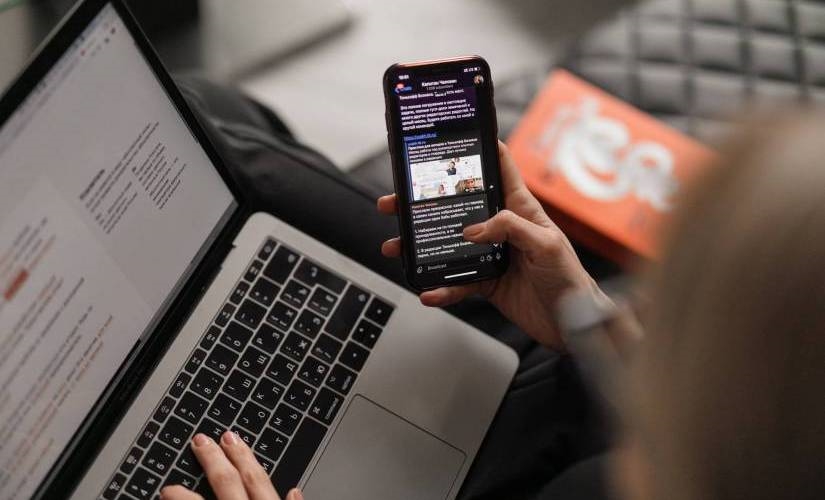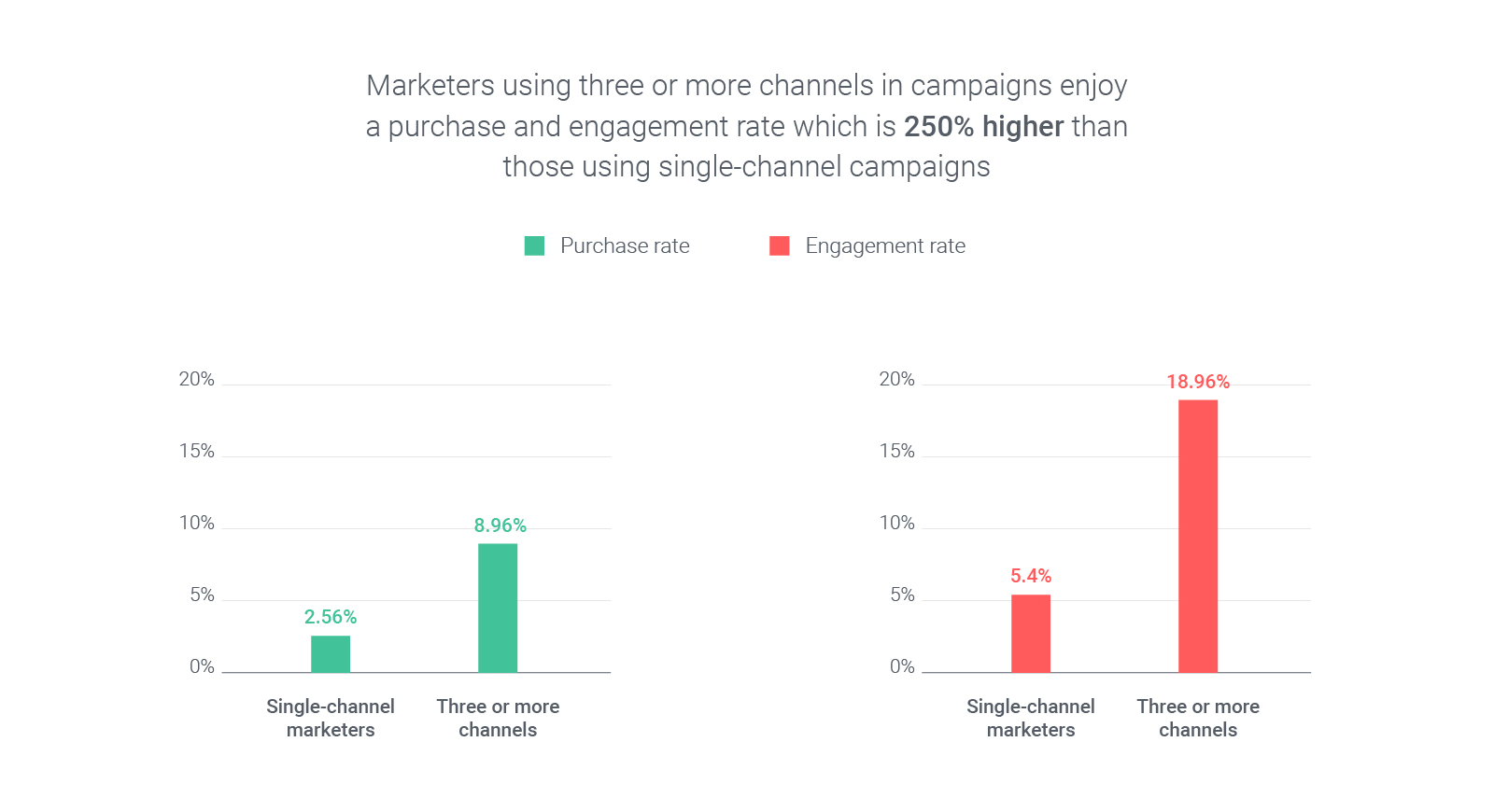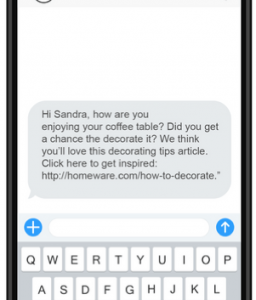How to Enhance your Omnichannel Strategy with SMS Messaging
How to Enhance your Omnichannel Strategy with SMS Messaging

Businesses are always trying to figure out the best ways to scale their businesses, especially with the myriad of technological tools and advancements we now enjoy in the 21st century. Here is how to enhance our omnichannel strategy with SMS messaging.
One such way to scale has been rethinking the way we marry digital and traditional forms of marketing. From a simple multichannel strategy that often would echo the same message on separate and unconnected channels, we’ve shifted to a more customer-centric, experience-boosting approach: omnichannel marketing.
As a refresher, allow me to quote Shopify’s definition of omnichannel marketing:
“Omnichannel [marketing] revolves around your customer and creates a single customer experience across your brand by unifying sales and marketing that accounts for the spillover between channels.”
So instead of thinking of marketing channels as separate entities repeating the same message, we’re forced to look at all channels and see how they bring about a unified customer experience. But why is it essential to implement an omnichannel strategy in 2020 and beyond?
Brand benefits for omnichannel marketing.
Let’s quickly discuss a few reasons why your brand can benefit from having an omnichannel marketing approach. According to surveys and studies, here’s what the data says in support of omnichannel:
- Customers exposed to 3 or more marketing channels of a brand are more likely to purchase 250% more than customers only exposed to a single channel.
- The engagement rate for brands using multiple channels can shoot up to 18.96%, compared to a 5.4% engagement rate on a single channel
- Customer retention rates are 90% higher for omnichannel versus single-channel.
- Average order value per customer rose by 13% for customers exposed to multiple channels compared to those who were not.

Purchase and engagement rates go up with an omnichannel approach. (Image source)
Which channels should businesses use for their omnichannel strategy?
Knowing what we now know about the benefits of omnichannel, you might now be wondering which channels actually to use. The answer is simple: whichever makes sense for your brand.
Most brands employ a mix of email marketing, social media, landing pages, ecommerce stores, and some offline channels like in-store experiences or activations. A combination of about three or more of these are tried and true; there’s another channel we recommend that is quite underutilized but can deliver powerful results: SMS messaging.
Why should businesses capitalize on SMS Messaging?
90% of customers prefer texting over other forms of communication, like phone calls and email. And for a good reason: texting is convenient, faster, and often more personal. Open rates for a text message go as high as 98%, compared to the average email open rate of about 20%.
The average person takes about 90 seconds to respond to a text but up to 90 minutes or more to respond to an email. Furthermore, 75% of customers themselves have reported that they’d be happy to receive personalized offers through text, and 65% of marketers claim that SMS marketing has been “very effective” for their businesses.
Conversions are also better with SMS marketing. Studies have found that consumers redeem coupons they receive through text ten times more than any other kind of coupon. And text messages get a 209% response rate, where 30% of customers respond to messages, and 50% of responders move on to make a purchase.
And while the data tells us SMS messaging should be a crucial part of our omnichannel strategy, not many businesses are using it. Some barriers to starting include not knowing how to use this ubiquitous channel properly. Marketers may also lack knowledge on how to get started. If you aren’t sure how to make the most of SMS as part of your omnichannel strategy, read on.
In these next sections, we discuss different ways SMS messaging can enhance your omnichannel strategy and deliver better customer experiences. And later on, we show you some of the best practices to keep in mind when you decide to send texts to your customers.
5 ways to enhance an omnichannel strategy with SMS Messaging
Just like every channel in your omnichannel strategy, SMS can play a significant role in delivering seamless, personalized customer experience. Here are five ways to use text messaging that pack a more powerful punch for your marketing campaigns.
Use a CMS that supports SMS messaging integrations.
First and foremost, you’ll need to integrate your website builder and content management system (CMS) with an SMS marketing plugin or software. The right SMS marketing solution for you makes it easy to manage SMS campaigns, keep track of customers, and automatically personalize messages with customer names and data.
The best reason for integrating your CMS with these tools is for easy monitoring of results from your SMS campaigns. You can track landing page views, conversion rates, and more to get insights or tweak campaigns as necessary. Most SMS marketing plugins and software also come equipped with autoresponders. Meaning that when a customer replies with a specific keyword, for example, they get an instant response that sends them the details they requested. Sending texts often come at no extra charge, but check with your chosen SMS service provider for any limits on your plan.
Different CMS like WordPress can integrate with several SMS marketing tools, allowing you to manage campaigns from one dashboard.
Click and Collect
One effective use case for retailers using SMS marketing is doing Click and Collect. Click and Collect is essentially allowing customers to purchase and checkout items from your retail store, then allowing them to pick up the items in person. Many customers use this shopping option to save on shipping and handling fees. Some opt for Click and Collect when they aren’t sure they can be home when deliveries arrive.
To enhance the Click and Collect customer experience, here are some ways you can use SMS messaging in this use case:
- Send a text to customers to confirm an order has been placed.
- Notify customers through text that their order is ready for pickup.
- Remind customers that their order is waiting, in case the customer hasn’t picked up the parcel over some time.
- Allowing customers to extend their collection period by texting a keyword.

An important message sent to your customers’ cell phone might include something that said:
Your order is here — Order Number 30745123. Please bring this message with you to pick up along with your payment card and photo ID. We will keep your order for 7 days. Thank you for your order from The Coolest Place on Earth.
Transactional reminders
After a customer makes or attempts a transaction with your online store, you can use SMS messaging to enhance the experience or increase conversions.
Here are examples of SMS transactional reminders you can send customers:
Abandoned cart retargeting. When a user abandons their cart online, remind them that they’ve left items before checkout. A message can convert users who may have abandoned their online carts because of a distraction, but you can also incentivize completing checkout with exclusive, time-limited discounts
- The item on your wishlist is on sale. If a user had saved something onto their wishlist that suddenly goes on sale, an instant text notification can encourage them checkout and make a purchase.
- Delivery status. Send text updates about order confirmation, estimated delivery dates, and when items are on their way or arriving on the same day.
- Payment reminders. If customers have yet to make a payment on their orders or invoices, send a helpful reminder that they’ll see right away.
Text offers and discounts can encourage shoppers to complete their purchases and even increase the average order value.
Use text messages for your customer service.
90% of customers prefer to text over a call or email, making SMS messaging a top channel for doing customer service. Also, by allowing customers to contact you via SMS for any concerns, queries, or requests, you’re able to provide nearly instant replies.
Have a robust SMS marketing software that can integrate with your other tools. Customers can receive your message information real-time.
Other ways that SMS marketing can help you provide better customer service is by sending personalized birthday greetings to customers, sending exclusive offers for loyal users, or having an onboarding sequence for new customers.
Send important announcements (e.g., delays, outages).
If anything, such as delivery delays or service outages, occurs, you can notify customers instantly by sending an SMS campaign.
Because people are more likely to check their phones and read text messages than read an email, you also ensure that your customers stay informed. A text message also helps lessen any anxiety and complaints.
Inform customers about any delays related to your product, such as flight delays for travelers.
Hiccups and bumps on the road will always happen, but as a business, it’s your job to keep customers in the loop – especially if they’re affected by any service interruption or delay. By keeping your customer updated with instant text messages (compared to emails or website banners that customers may never open), it’s easier to provide a seamless customer experience.
Even if your business encounters a roadblock, customers are far more likely to be forgiving if they’re notified right away.
Best practices when using SMS Messaging
After seeing a few ways you can use SMS marketing, keep in mind these best practices as you create your campaigns:
Make sure your website is mobile-friendly
With SMS marketing, you can send links and multimedia messages (MMS) to provide a more dynamic messaging experience.
So if your campaigns link to your website or landing page, it’s incredibly important to make it easy for customers to view pages, offers, and sign-up forms on mobile.
You can use MMS and in-text links for special promotions and CTAs.
Mobile-friendliness also transcends to simple themes and visuals adapting to the screen. It should be easy for customers to locate important buttons, forms, and other call-to-action on your landing page.
Send the message at the time most convenient to your leads
Timing is crucial for SMS marketing. Imagine if you sent a discount code for customers at 4 in the morning. You can probably expect unsubscribes or negative brand experiences.
90% of people will read a text message within the first 3 minutes of receiving it. So if you have any offers and promotions, you might want to send these campaigns during times when customers are on a break or are at home.
Transactional messages like order confirmations can be sent instantly (even if a customer completes a purchase at, say, midnight). Still, reminder or update texts are best sent during convenient times, such as regular waking hours.
Add value while creating awareness
It can be easy to fall into the trap of using SMS marketing purely for promotions. But if all you send are mass generic promotional messages, customers may not become happy with your brand.
Even though space for SMS messaging is limited, you can still add value for customers in your text campaigns. This applies to both promotional and non-promotional messages.
For example, using the transactional history of your users, you can send highly personalized and targeted offers that show you understand their preferences and needs.
Companies can also use text messaging to enhance purchase experiences, such as providing high-value follow-ups post-purchase.

Ensure your message is clear and consistent.
Be sure your brand voice is consistent in your messages. And because you only have a limited number of characters per SMS, keep your message short and sweet.
Consider using MMS and dynamic elements to supplement your text. Don’t send long blocks of texts that are difficult to skim.

The key to effective SMS marketing is sending short messages.
The key to effective SMS marketing is short messages.
Cover all privacy issues and concerns.
As data privacy concerns are on the rise – where consumers may feel that marketing messages can be borderline intrusive – be very transparent about the way you handle their personal data, such as their phone numbers.
Display disclosures and trust signals that guarantee to consumers that messages they receive and send to your brand are encrypted and secure. (Read privacycanada.net and the European GDPRs if you really want to protect your customers’ data.)
For example, when a new user makes a purchase on your site, you may display a disclaimer that their phone number will be used to get in touch regarding delivery updates. Build trust from the get-go, so customers feel at ease receiving your SMS campaigns.
Use in moderation — don’t overdo messaging.
While you can enjoy higher open and engagement rates using SMS marketing, don’t overdo it. Customers will likely only be annoyed if they receive say, daily messages from your company – or worse, multiple messages throughout the day.
Keep text campaigns regular, about once per week or less. Try to reserve your SMS campaigns for outstanding offers and promos, and keep follow-ups and reminders far and few to avoid looking spammy. Often, it’s enough to send one campaign to announce your promotion. Then another 1-2 reminders that are considerably spaced out, such as one during the middle of your promotion and another one towards the end.
Focus on creating conversations
Maximize the power of SMS marketing by having a conversational approach. Because SMS can feel very personal to customers, it’s important for messages to be as highly targeted as possible.
Use customers’ first names whenever possible. Don’t be afraid to end messages with questions or CTAs. Craft every message as though you were speaking to your customers individually, and customers will only appreciate your SMS efforts.
Track and monitor your results
Last but not least, every channel in your omnichannel strategy ought to be monitored – especially SMS. Review your open rates, conversions, as well as other KPIs you set at the beginning of your campaign.
Tweak your strategy as you go, primarily based on real data and insights from your tactics. After all, the more you experiment with SMS marketing, the better you get.
Takeaway
To provide a complete omnichannel marketing strategy, consider adding SMS into your media mix. With unparalleled engagement rates, this simple channel can help streamline your customer experiences and boosting loyalty along the way. Use the tips in this article to help you create your own SMS campaigns, and start seeing your omnichannel strategy create valuable online and offline experiences.
Image Credit: Maxim Ilyahov, Unsplash
The post How to Enhance your Omnichannel Strategy with SMS Messaging appeared first on ReadWrite.
(33)

